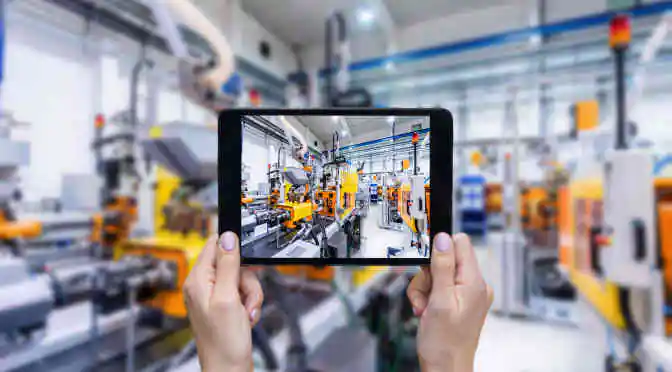In the last two decades, technology has massively evolved, thereby transforming the nature of industrial and manufacturing operations. Indeed, industries are no longer entirely dependent on a human workforce for simple or complex tasks. With digitalization and IoT, industrial automation has become a competitive advantage in today’s industrial landscape.
When integrated end-to-end, automated production is reliable, efficient, transparent, and predictable. This is the promise of industrial automation, a core component of the Industrial Internet of Things (IIoT). Although manufacturing automation has become a popular process, with advances in technologies such as artificial intelligence (AI) and remote communication, this practice is likely to become obsolete in the coming years. New technologies in industrial automation are creating opportunities for manufacturers around the world.
Here are the top 5 future trends in industrial automation that are likely to have a significant impact in 2018:
1) Improving accuracy with machine learning
Machine learning and AI are rapidly going mainstream. The technology has already penetrated the customer relationship management segments, and is a cornerstone of IoT, Big Data, and Industry 4.0. The consistent changes in consumer behavior in terms of product quality and customization create major difficulties for manufacturers that are trying to change the production system. This is where machine learning benefits said manufacturers.
Manufacturing units can leverage data analytics and machine learning for their process improvements. These systems help in predicting yield rates at various levels of the supply chain, thereby reducing the cost of raw materials and protecting brand quality. Further, AI provides real-time operational intelligence that supports product lifecycle management which includes process integration, automation and collaboration insights, monitoring, and diagnostics.
2) Digital twins and industrial automation
The concept of ‘digital twins’ allows for the creation of a virtual copy of a machine or system. This is now becoming a prerequisite in the product development landscape. Also, digitalization of plants and machinery ensures efficient commissioning, optimized machine design, smooth operations and short changeover time. This process reduces the dependence on costly prototypes while speeding up the time to market.
Additionally, digital twins are now active on factory floors, analyzing production efficiencies and prompting predictive maintenance. In the future, manufacturers will be aware of all the components installed in their products. Thereby, allowing them to provide a targeted response to issues and to optimize processes.
3) Advances in industrial cybersecurity
Over the past decade, the rise in cyber-attacks on critical infrastructure has resulted in cyber security becoming a key concern amongst the users and vendors of industrial automation control systems. Fortunately, advances in industrial cybersecurity management is helping to address the crucial requirements of industrial automation applications, equipment and plants as these relate to stringent constraints on network communications and system updates.
The advanced industrial cybersecurity solutions available today take a very effective hybrid approach. Ergo, this includes both behavior-based anomaly detection that helps to identify would-be cyber threats using conventional cybersecurity approaches, and rules-based analysis that allows manufacturers to leverage deep inspection in order to uncover malware cyberattacks on the network.
4) Virtual reality and augmented reality
Today, augmented reality (AR) and virtual reality (VR) are being used in several contexts from consumer applications to manufacturing. However, it is in the latter that AR offers immense value in myriad forms, in combination with various other technologies. Indeed, VR and AR technologies are revolutionizing complex production processes and product developments.
In the context of industrial and manufacturing automation, VR can help manufacturers simulate a product or environment digitally. Thus, allowing them to interact and immerse themselves within it. AR helps industrial users project digital products or information onto a real-world environment. This is more productive than projecting on a digitally simulated environment like in VR.
5) The rise of smart industrial robots
The increasing presence of intelligent industrial robotics on factory floors is a win for the fourth industrial revolution (Industry 4.0). Although manufacturers have been using robots for decades, the constant development of robotic technologies has undoubtedly broadened the potential applications for smart industrial robots. Thus, today, robots driven by cutting-edge software and vision systems can be programmed to perform a range of tasks, which fits in neatly with the demand for flexible manufacturing.



